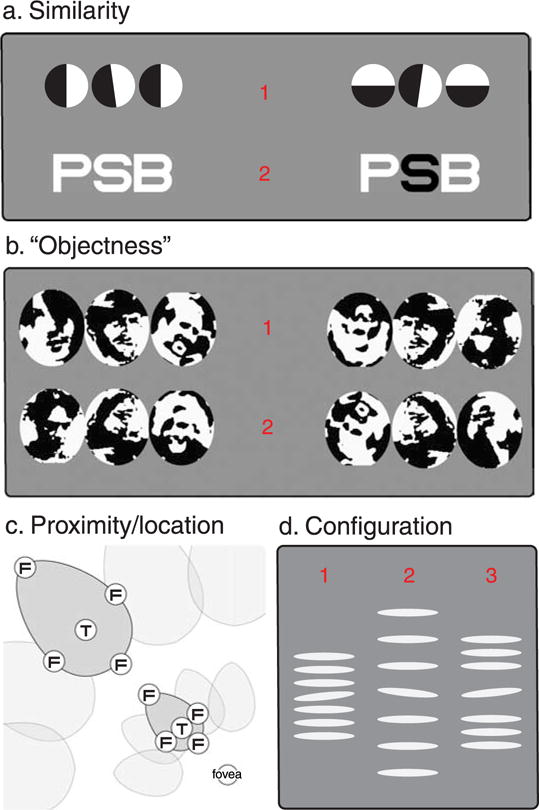Figure 1.

Determinants of crowding. (a) The more similar objects are, in terms of their low-level feature properties, the more they crowd one another. Fixating the red numbers in turn, it is harder to recognize the central element of the triplets on the left than on the right. (b) For objects, where local similarity has been factored out, upright flanker faces crowd more than inverted flankers, irrespective of target orientation (Mooney faces after Farzin et al., 2009). Again, targets on the right should be easier to identify then targets on the left. (c) “Interference zones” for crowding. The region within which flankers (“F”) interfere with identification of a target (“T”) depends on target and flanker locations in the visual field. (d) Configuration effects (after Saarela & Herzog, 2009). Fixating “1” the identity of the central element is lost (objects are similar, and close). Increasing separation helps a little (fixate “2”) but fixating “3” the central identity is clear, even though the target and its immediate neighbors have not changed. That is, global configuration can also affect crowding.
